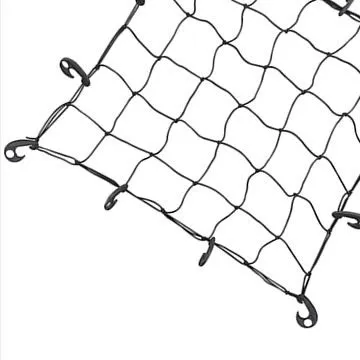- Afrikaans
- Albanian
- Amharic
- Arabic
- Armenian
- Azerbaijani
- Basque
- Belarusian
- Bengali
- Bosnian
- Bulgarian
- Catalan
- Cebuano
- Corsican
- Croatian
- Czech
- Danish
- Dutch
- English
- Esperanto
- Estonian
- French
- German
- Greek
- Hindi
- Indonesian
- irish
- Italian
- Japanese
- Korean
- Lao
- Malay
- Myanmar
- Norwegian
- Norwegian
- Polish
- Portuguese
- Romanian
- Russian
- Serbian
- Spanish
- Swedish
- Thai
- Turkish
- Ukrainian
- Uzbek
- Vietnamese
Δεκ . 10, 2024 15:59 Back to list
mineral fiber acoustic ceiling
Understanding Mineral Fiber Acoustic Ceilings An Overview
In the realm of building materials, acoustic ceilings play a pivotal role in enhancing the auditory experience within a space. Among the various options available, mineral fiber acoustic ceilings have emerged as a popular choice for both commercial and residential applications. This article will explore the characteristics, benefits, and applications of mineral fiber acoustic ceilings, shedding light on why they are widely favored.
What Are Mineral Fiber Acoustic Ceilings?
Mineral fiber acoustic ceilings are ceiling tiles or panels made from a combination of natural and synthetic fibers, primarily composed of mineral-based materials such as gypsum, perlite, and fiberglass. These materials are designed to absorb sound, control acoustics, and improve indoor air quality. The production process involves creating a fibrous mat that is then formed into panels and often treated with fire-resistant coatings.
Benefits of Mineral Fiber Acoustic Ceilings
1. Sound Absorption One of the primary advantages of mineral fiber acoustic ceilings is their ability to absorb sound. The porous structure of the materials allows for effective sound attenuation, reducing echo and reverberation. This is particularly valuable in environments such as offices, schools, and auditoriums where a clear auditory experience is essential.
2. Aesthetic Versatility Available in a variety of colors, textures, and patterns, mineral fiber acoustic ceilings offer significant aesthetic flexibility. Designers can choose from smooth surfaces for a sleek, modern look or textured options that add character to a space. This variety enables seamless integration into various interior design themes.
3. Improved Indoor Air Quality Many mineral fiber acoustic ceilings are designed with features that contribute to better indoor air quality. Some products incorporate microbial-resistant properties, helping to deter mold and mildew growth. Additionally, many mineral fiber products are low in volatile organic compounds (VOCs), making them safer for indoor environments.
4. Fire Resistance Fire safety is a critical concern in building design. Mineral fiber materials are inherently fire-resistant, providing an added layer of protection to commercial and institutional buildings. The non-combustible nature of these materials helps to slow the spread of flames and smoke, potentially saving lives and property.
mineral fiber acoustic ceiling

5. Energy Efficiency The installation of mineral fiber acoustic ceilings can contribute to energy efficiency. By improving sound insulation, they can reduce the need for excessive heating or cooling in a building. Moreover, certain products are designed to enhance thermal insulation properties, further aiding in energy conservation.
Applications of Mineral Fiber Acoustic Ceilings
Mineral fiber acoustic ceilings are versatile and find applications in a wide range of settings
- Commercial Spaces Offices, conference rooms, and open-plan workspaces often utilize mineral fiber acoustic ceilings to create a conducive working environment. The noise control ensures privacy during conversations and reduces distractions.
- Educational Institutions Classrooms and auditoriums benefit from mineral fiber ceilings as they promote better sound clarity, allowing teachers and presenters to be heard clearly. This contributes to a more effective learning and teaching experience.
- Healthcare Facilities Hospitals and clinics value the sound-absorbing properties of these ceilings, which contribute to a quieter, more peaceful environment that aids patient recovery. Additionally, the hygienic properties of mineral fiber ceilings are crucial for maintaining a clean healthcare setting.
- Retail Environments Stores often implement mineral fiber acoustic ceilings to create a pleasant shopping atmosphere. The reduction of background noise enhances customer experience, encouraging longer visits and potentially increasing sales.
Conclusion
Mineral fiber acoustic ceilings represent a perfect blend of functionality, aesthetics, and safety. Their sound-absorbing qualities, versatility in design, and contributions to indoor air quality make them a preferred choice for a variety of applications. Whether in commercial buildings, educational settings, or healthcare facilities, these ceilings not only enhance auditory experiences but also support overall building performance. As the demand for effective acoustic solutions continues to grow, mineral fiber acoustic ceilings will undoubtedly remain a key player in the construction and design industry.
-
Transform Interiors with PVC Gypsum Ceiling: A Stylish, Durable, and Moisture-Resistant SolutionNewsMay.19,2025
-
The Smart Interior Upgrade: Discover the Durability and Versatility of Gypsum Ceiling Access Panel SolutionsNewsMay.19,2025
-
The Smart Choice for Interior Design: Discover the Value of PVC Gypsum Ceiling SolutionsNewsMay.19,2025
-
Mineral Fiber Ceiling Tiles: The Smart Blend of Performance and AestheticsNewsMay.19,2025
-
Mineral Fiber Ceiling Tiles: The Superior Choice Over Gypsum for Sound and Fire SafetyNewsMay.19,2025
-
Mineral Fiber Ceiling Tiles: Eco-Friendly Strength and Style for Every CeilingNewsMay.19,2025







